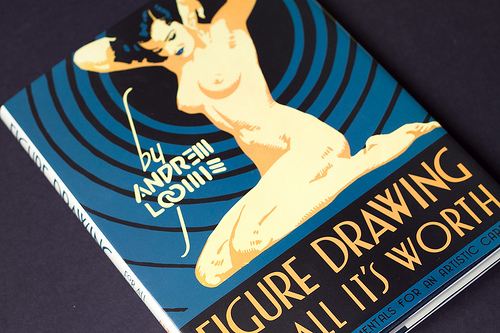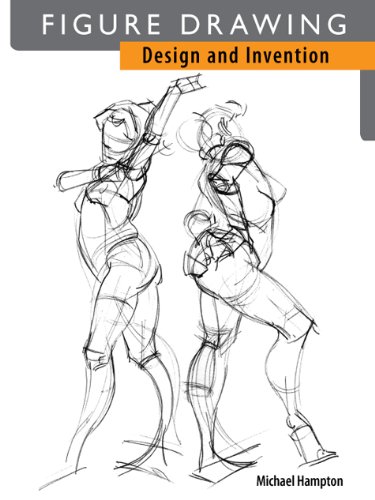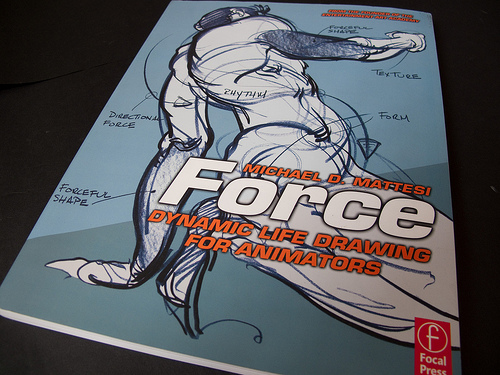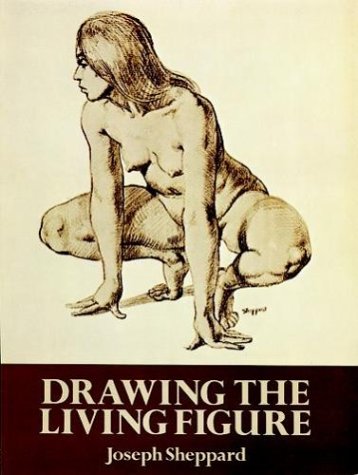Best Anatomy Books for Artists (Some of my favourites)
I occasionally get readers asking me to recommend anatomy books to them.
I guess the reason is because some readers aren't aware that there's actually a list of anatomy books reviewed on my blog, or that list is just too long and they want a quick and simple guide for helping them choose the correct book. Too many choices can lead to choice paralysis.
So I've compiled this condensed list of what I think are some of the best anatomy books available. More accurately speaking, they are some of my favourite anatomy books. If you have differing opinions, share them in the comments sections to help other readers.
I've split the list into two. The first list has anatomy reference books which covers the muscles and bones. The second list will be titles that complement those books from the first list.
Anatomy reference books

Classic Human Anatomy: The Artist's Guide to Form, Function, and Movement
This is my favourite. Valerie L. Winslow's book is well researched, written clearly and comes with beautiful anatomy drawings. It's informative and if I can only buy one book, this would be the book I'll get.

Human Anatomy for Artists: The Elements of Form
Eliot Goldfinger's book is also another excellent anatomy reference. It covers muscles and bones. There are also photographs that accompany the anatomy drawings. This book and the one below are the most comprehensive in coverage of body parts.

Anatomy Drawing School: Human, Animal, Comparative Anatomy
This is an anatomy reference book that shows detail drawings of muscles and bones. It's quite comprehensive and also includes some animals.
Books that complement anatomy books
Generally speaking, you just need one good anatomy reference book. As for complementary books, such as the ones below, you can get them all as all the instructors talk about figure drawing from their own perspective so you can get a lot of different insight.

Figure Drawing for All It's Worth
This is an artists favourite that got reprinted by Titan Books. It's an encouraging instruction book on figure drawing. They are many tips on posing characters and drawing them. It's great for beginners.

Figure Drawing: Design and Invention
The author Michael Hampton takes a more structural approach to teaching figure drawing. He shows different body parts broken down into geometric shapes so that they are easier to pose and draw. If you learn best by the structural approach, you can also check out books by George B Bridgman.

Force: Dynamic Life Drawing for Animators
This is a fantastic figure drawing book that will give your figures life and make them feel dynamic, real and grounded. Michael D. Mattesi focuses on getting you to think before you draw, to give your characters a story, so that you can draw your character acting out the action. Foundation knowledge of anatomy is required to get the best out of this book.

Drawing the Living Figure
This book uses life drawings from models to teach human anatomy. Joseph Sheppard has included 70 drawings of models in different poses, from standing to reclining. Most are accompanied by two diagrams, one for bones and other for muscles, showing how they affect surface form. These drawings are carefully annotated and selective parts are highlighted.

Anatomy for Sculptors: Understanding the Human Figure
The main difference between this book versus other anatomy books is the inclusion of the various body postures. In addition to the usual standing figures, there are many examples of stretched muscles that come from different body postures such as twisting torso, arms moving from the top, front of chest, side, and to the back, behind the head and hand on shoulder. This is helpful because you don't have to second guess how any muscle will look like when in stretched mode or moving into different positions. Other anatomy books mostly show just the front, sides and back of the body and limbs, with the muscles in relaxed state.
Conclusion
Learning from books is just one aspect to learn anatomy. Another great way is to go out and attend life drawing lessons, or just draw people you see in the public. You'll learn about things that aren't cover in books, you get to see people of different shapes, sizes, age and personality. With time, you'll be so accustomed to drawing people you would be able to draw them from your imagination.
So these are the seven books I'll recommend to anyone who wants to learn anatomy drawing.
To check out all the anatomy books reviewed on the blog, visit https://www.parkablogs.com/content/anatomy-and-figure-drawing-books-art…




Add new comment